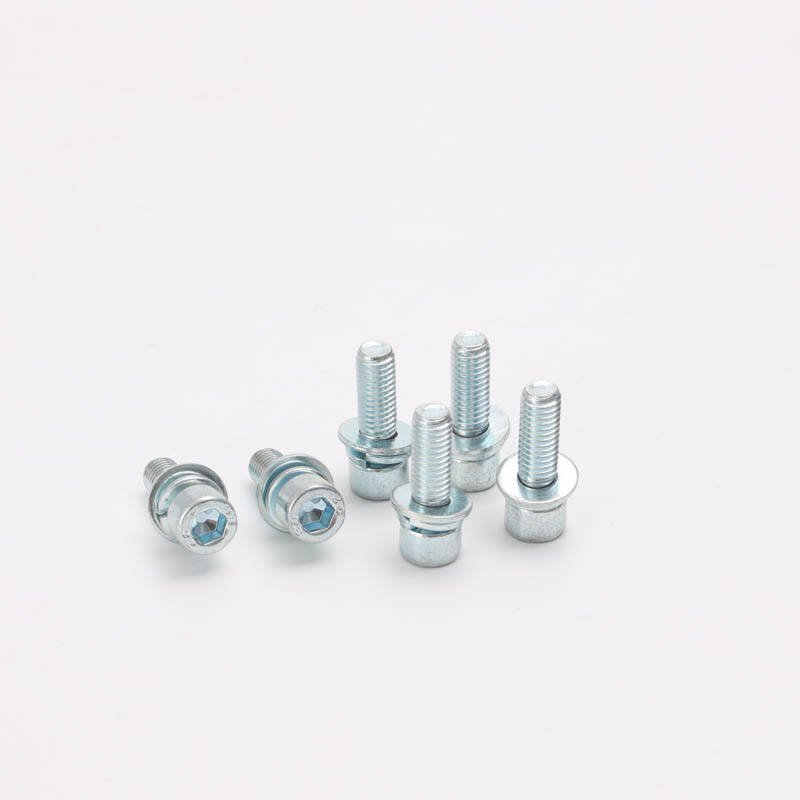Understanding the Essential Role of Earhose Clamps in Modern Applications
In the world of industrial and automotive applications, earhose clamps serve as indispensable components that ensure secure and leak-free connections. These versatile fastening devices have revolutionized the way we join hoses, pipes, and tubes across numerous industries. From automotive assembly lines to residential plumbing systems, earhose clamps provide reliable solutions for maintaining tight seals and preventing fluid leakage.
The distinction between single and double earhose clamps represents a crucial choice in fastening technology. Each type offers unique advantages and specific use cases that can significantly impact the success of your connection requirements. As we delve deeper into their characteristics, you'll discover how these seemingly simple devices play a vital role in ensuring system integrity and operational efficiency.
The Fundamental Differences Between Single and Double Variants
Single Earhose Clamp Design Features
Single earhose clamps feature a straightforward yet effective design with one ear or closing mechanism. The single ear configuration creates a uniform compression point that effectively seals connections in many standard applications. These clamps typically consist of a preformed band with one raised section that, when compressed, creates the necessary sealing force.
The primary advantage of single earhose clamps lies in their simplicity and cost-effectiveness. Their streamlined design makes them ideal for applications where space is limited or when budget considerations are paramount. The single compression point provides adequate sealing force for most general-purpose applications, making them a popular choice in automotive cooling systems and general industrial use.
Double Earhose Clamp Construction Benefits
Double earhose clamps represent an evolution in clamping technology, featuring two compression points or ears. This dual-ear design distributes the clamping force more evenly around the circumference of the hose, resulting in a more balanced and secure seal. The additional compression point provides enhanced stability and reliability, particularly in high-pressure or vibration-prone environments.
The sophisticated design of double earhose clamps offers superior sealing capabilities and increased resistance to vibration-induced loosening. While they may come at a higher initial cost, their improved performance characteristics often justify the investment in critical applications where failure is not an option.
Material Composition and Durability Factors
Corrosion Resistance Properties
The longevity of earhose clamps largely depends on their material composition and protective coatings. High-quality earhose clamps are typically manufactured from stainless steel, offering excellent resistance to corrosion and chemical exposure. The grade of stainless steel used can vary depending on the intended application, with 304 and 316 grades being among the most common choices.
Surface treatments and coatings provide additional protection against harsh environmental conditions. Some manufacturers apply specialized zinc or chromate coatings to enhance corrosion resistance further, particularly important in marine or chemical processing applications where exposure to corrosive elements is constant.
Strength and Structural Integrity
The structural integrity of earhose clamps is crucial for maintaining secure connections under varying conditions. The thickness and quality of the band material directly influence the clamp's ability to maintain consistent pressure over time. Premium earhose clamps feature optimized band designs that distribute stress evenly, preventing material fatigue and ensuring long-term reliability.
Manufacturing processes, including proper forming and heat treatment, play a vital role in determining the clamp's ultimate strength. Quality control measures during production ensure consistent performance and reliable operation throughout the clamp's service life.
Application-Specific Selection Guidelines
Pressure Rating Considerations
Selecting the appropriate earhose clamp requires careful consideration of system pressure requirements. Single earhose clamps typically handle moderate pressure applications effectively, while double earhose clamps excel in high-pressure environments. Understanding the maximum operating pressure of your system is crucial for making an informed selection.
Engineers and technicians must also account for pressure fluctuations and potential pressure spikes when choosing between single and double variants. The safety factor built into the clamp's design should accommodate these variations while maintaining a secure seal.
Temperature and Environmental Factors
Environmental conditions significantly influence the performance and longevity of earhose clamps. Temperature extremes can affect both the clamp material and the hose being secured. High-quality earhose clamps maintain their clamping force across a wide temperature range, ensuring consistent performance in varying conditions.
Consideration must also be given to chemical exposure, UV radiation, and other environmental factors that could impact the clamp's integrity. Proper material selection and protective coatings become especially critical in challenging environments.
Installation Best Practices and Maintenance
Proper Installation Techniques
Correct installation is crucial for optimal performance of earhose clamps. The installation process begins with proper positioning of the clamp, ensuring it sits squarely on the hose without any twist or misalignment. Using appropriate installation tools is essential for achieving the correct compression without damaging the clamp or underlying hose.
For both single and double earhose clamps, maintaining consistent compression during installation helps prevent leaks and ensures long-term reliability. Professional installers recommend verifying the clamp's orientation and checking for proper seating before final tightening.
Maintenance and Inspection Protocols
Regular maintenance and inspection of earhose clamps help prevent unexpected failures and extend service life. Periodic visual inspections can identify early signs of corrosion, wear, or loosening. Maintenance personnel should check for proper compression retention and any signs of hose damage near the clamping points.
Documentation of inspection findings and maintenance activities helps track the performance history of installed clamps and guides replacement decisions. Preventive maintenance programs should include scheduled checks of critical connections and replacement of clamps showing signs of deterioration.
Frequently Asked Questions
What determines the choice between single and double earhose clamps?
The selection between single and double earhose clamps depends on several factors, including operating pressure, space constraints, vibration exposure, and budget considerations. Double earhose clamps are typically preferred for high-pressure applications or situations requiring maximum security, while single variants work well for standard applications with moderate pressure requirements.
How often should earhose clamps be inspected and replaced?
Earhose clamps should be visually inspected at least every six months, with more frequent checks in demanding applications. Replacement intervals depend on operating conditions, but clamps showing signs of corrosion, deformation, or losing compression should be replaced immediately regardless of age.
Can earhose clamps be reused after removal?
While technically possible, reusing earhose clamps is not recommended for critical applications. The compression mechanism may become compromised during removal, and microscopic damage could affect sealing performance. For optimal safety and reliability, installing new clamps during maintenance or repairs is best practice.

